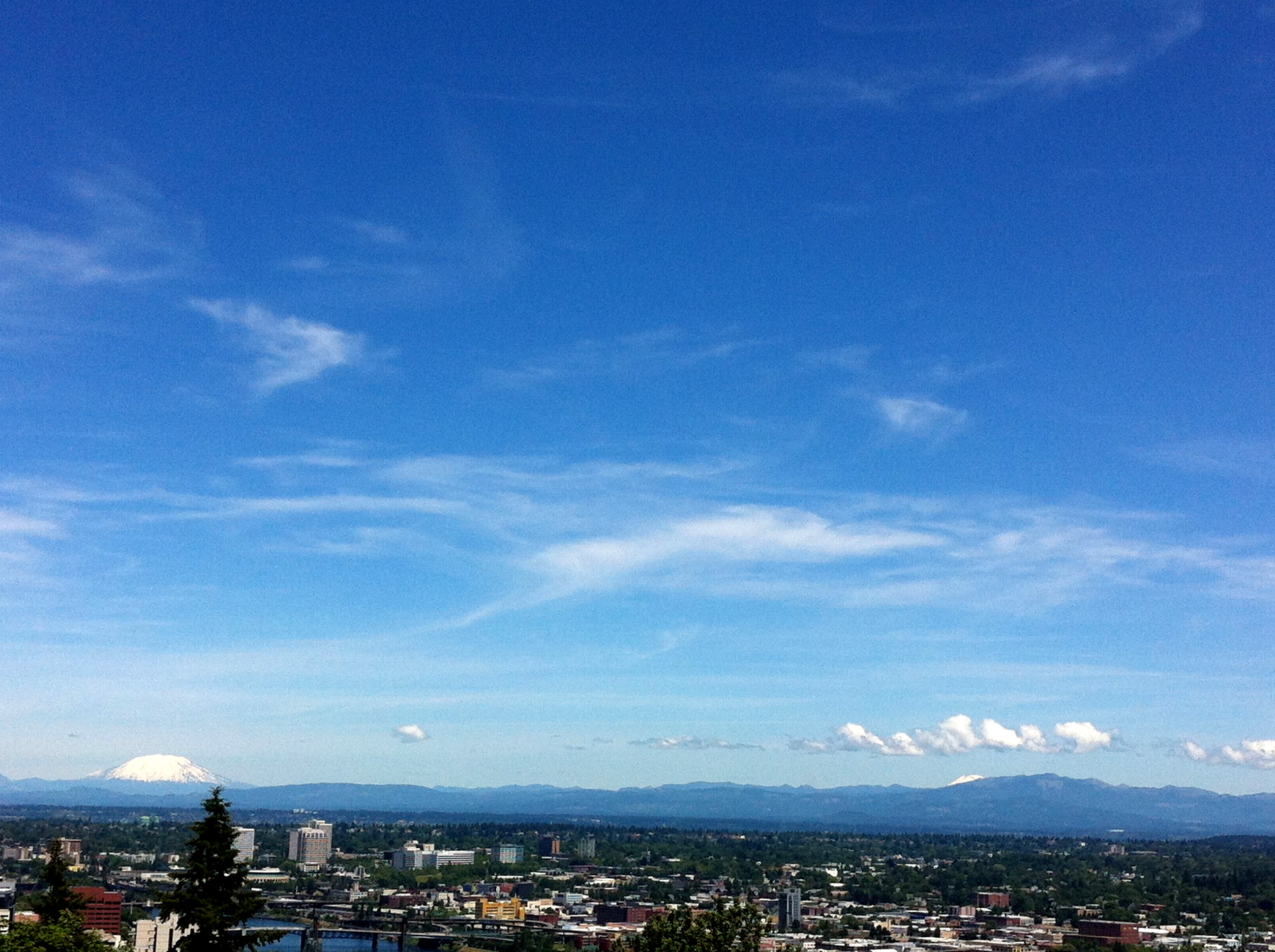Sandra, your question relates back to another question about the electromagnetic spectrum. When we consider the sky we have to think about the wavelengths of light. White light is coming from the sun to Earth. White light contains all the visible colors, we see this as a rainbow of colors through a prism. Of those visible colors, red has the lower energy and the longest wavelength, blues have the higher energy and the shorter wavelength.
Our air is full of particles, oxygen, carbon dioxide, hydrogen, dust, nitrogen, water droplets and so on are present in the atmosphere. We can imagine that the sky is full of atoms and molecules floating around though they are too small for us to see with our eyes. (Until the dust and water droplets condense to make clouds or there is too many particles and we see haze or smog.)
Now, imagine a wavelength of light coming into the atmosphere. If it is a red wave it is coming in in wide waves. This red light has less of a chance of bumping into particles. If the wave is blue though it is zigzagging back and forth a lot more and has more chance of bumping into a particle. When a blue wave bounces into a particle it is dispersed. That means it is deflected from that particle and maybe into another and so on until it is eventually deflected toward the ground. This deflection is called the scattering of light.
So we have red light coming in straight and blue bouncing off in every which direction like this diagram:
 |
| From NASA.gov |
The next question is why blue instead of violet? Violet has more energy and an even shorter wavelength.
There are four reasons for this. The first is the light itself. The light coming from the sun is not constant nor does it always represent every color in the visible light spectrum. Some of the highest energy light, the violets, are absorbed by the upper atmosphere. The blues and violet are scattered around but we are also getting some light that is reaching us unscattered. So, the violet and blue are lightened. We can see this effect if you are in an open landscape. On a bright, sunny, cloudless day the sky overhead will appear the bluest and will fade to a more and more pale color toward the horizon. The last reason has to do with our eyes. We have three major types of cones or color sensitive receptors in our eyes; red, blue and green. These are named because of the colors they are most sensitive to. Our blue receptors sense blues, indigos and violets. When we look at the sky our blue receptors are stimulated more than the red or green and so we perceive a blue sky.
And since I have forgotten to do this with past questions, from now on I will be citing sources. For this question it includes the following:
University of California
NASA's Space Place
How Stuff Works
Science Made Simple

No comments:
Post a Comment